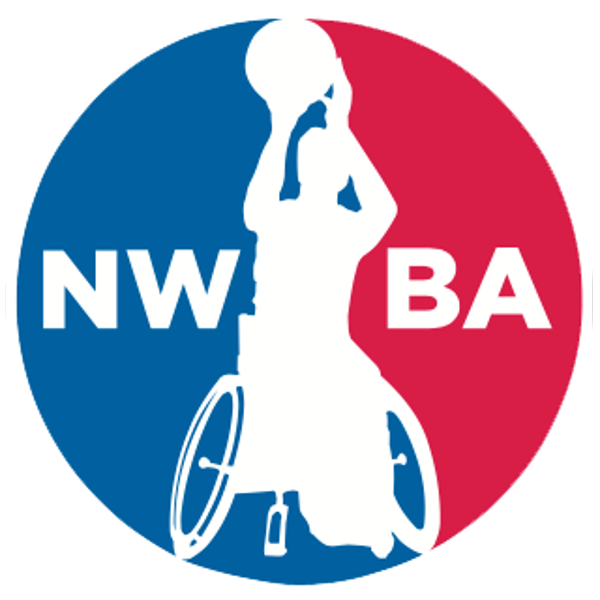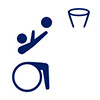 a Summer Games Paralympic Sport
a Summer Games Paralympic SportGoverning Bodies
International Governing Bodies

International Wheelchair Basketball Federation (IWBF)
National Governing Bodies
United States

National Wheelchair Basketball Association (NWBA)
Introduction:
Wheelchair basketball is a fast-paced game played by two teams of five players where the object is to shoot the ball into the opposing team’s basket.
Every team is comprised of five players and seven substitutes. The match consists of four periods of ten minutes. If the score is tied at the end of playing time for the fourth period, the match will be continued with an extra period of five minutes or with as many such periods of five minutes as are necessary to break the tie.
History of the Sport:
Wheelchair basketball was first played at two USA World War II veterans’ administration hospitals; Corona Naval Station, California, and Framingham, Massachusetts, in 1945.
Independently, in 1948 British war veterans started playing wheelchair netball under Dr Ludwig Guttmann (GER) at Stoke Mandeville Hospital.
The first national wheelchair basketball tournament was held in Illinois, USA, with six teams in 1949. In the same year the National Wheelchair Basketball Association (NWBA) was formed in USA.
The Pan Am Jets of USA brought wheelchair basketball to Europe when they were invited to play at the International Stoke Mandeville Games in 1955, initially having to settle for wheelchair netball. After dominating the competition, their performance initiated the switch from wheelchair netball to wheelchair basketball for future Games.
Wheelchair basketball was one of the sports at the inaugural Rome 1960 Paralympic Games.
Rules – How to Play the Sport:
BASIC RULES OF WHEELCHAIR BASKETBALL
The basic rules of wheelchair basketball are very similar to running basketball (for example the height of the basket, distance to the foul line, three point line, etc., are the same measurements as in the game of running basketball), but over time they have evolved as well. In 1964, basic international rules were adopted which included minor adjustments to meet the needs of the game in a wheelchair. Wheelchair basketball is played in accordance with the International Wheelchair Basketball Federation (IWBF) rules which have been modified from Federation Internationale de Basketball (FIBA).
SCORING
A goal is credited to the team attacking the basket into which the ball has entered as follows:
- A goal from a free throw counts one (1) point;
- A goal from the two-point field goal area counts two (2) points;
- A goal from the three-point field goal area counts three (3) points.
Every team has 24 seconds to complete its attempt to score a basket. If the team with the ball exceeds this time limit, then the ball and the right of play is granted to the opposing team.
DRIBBLING
A player may wheel the chair and bounce the ball simultaneously, however, if the ball is picked up and/or placed on the player’s lap, he/she is only allowed to push twice before they are obligated to shoot, pass, or dribble the ball again. There is no double dribble rule in wheelchair basketball. A traveling violation occurs if the player takes more than two pushes while in possession of the ball without dribbling. A player is not allowed to touch the playing surface with his or her feet while in possession of the ball.
FOULS
The wheelchair is considered part of the player’s body in relation to establishing responsibility for contact on the court in the case of charging, blocking, going out of bounds, and other violations. An offensive player may not remain in the key area for more than three seconds. In addition to the technical fouls that may be assessed from time to time as in stand up basketball, a player lifting his/her legs to gain an advantage or lifting out of his/her chair is given a technical foul. The player must remain firmly seated in his/her chair and must not use his/her lower limbs to steer the chair or gain an unfair advantage. In the event that a player falls out of his/her chair, a referee may stop the play if in his/her opinion the player is at risk of being injured, otherwise play will continue. On an inbounds play, the offensive player is not allowed to go into the key until the ball is handed to the inbounding player by the referee.










